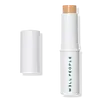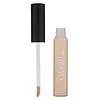What's inside
What's inside
 Key Ingredients
Key Ingredients

 Benefits
Benefits

 Concerns
Concerns

 Ingredients Side-by-side
Ingredients Side-by-side

Helianthus Annuus Seed Oil
EmollientRicinus Communis Seed Oil
MaskingCarthamus Tinctorius Seed Oil
MaskingCopernicia Cerifera Cera
EmollientSynthetic Beeswax
Emulsion StabilisingCastor Isostearate Succinate
Skin ConditioningMica
Cosmetic ColorantTocopherol
AntioxidantPolyhydroxystearic Acid
EmulsifyingCaprylic/Capric Triglyceride
MaskingSimmondsia Chinensis Seed Oil
EmollientRosa Rubiginosa Seed Oil
EmollientCrambe Abyssinica Seed Oil
Skin ConditioningIsostearic Acid
CleansingLecithin
EmollientPolyglyceryl-3 Polyricinoleate
EmulsifyingCalendula Officinalis Flower Extract
MaskingCamellia Sinensis Seed Oil
HumectantAloe Barbadensis Leaf Juice
Skin ConditioningMaltodextrin
AbsorbentSodium Benzoate
MaskingPotassium Sorbate
PreservativeCI 77891
Cosmetic ColorantIron Oxides
Helianthus Annuus Seed Oil, Ricinus Communis Seed Oil, Carthamus Tinctorius Seed Oil, Copernicia Cerifera Cera, Synthetic Beeswax, Castor Isostearate Succinate, Mica, Tocopherol, Polyhydroxystearic Acid, Caprylic/Capric Triglyceride, Simmondsia Chinensis Seed Oil, Rosa Rubiginosa Seed Oil, Crambe Abyssinica Seed Oil, Isostearic Acid, Lecithin, Polyglyceryl-3 Polyricinoleate, Calendula Officinalis Flower Extract, Camellia Sinensis Seed Oil, Aloe Barbadensis Leaf Juice, Maltodextrin, Sodium Benzoate, Potassium Sorbate, CI 77891, Iron Oxides
Ingredients Explained
These ingredients are found in both products.
Ingredients higher up in an ingredient list are typically present in a larger amount.
This ingredient is an emollient, solvent, and texture enhancer. It is considered a skin-softener by helping the skin prevent moisture loss.
It helps thicken a product's formula and makes it easier to spread by dissolving clumping compounds.
Caprylic Triglyceride is made by combining glycerin with coconut oil, forming a clear liquid.
While there is an assumption Caprylic Triglyceride can clog pores due to it being derived from coconut oil, there is no research supporting this.
Learn more about Caprylic/Capric TriglycerideLecithin is a term for a group of substances found in the cell membranes of plants, animals, and humans. They are made up of mixture of phospholipids.
This ingredient has emollient and emulsifying properties.
As an emollient, lecithen helps soften the skin and creates a barrier to keep moisture in.
As an emulsifier, it also helps prevent water and oil ingredients from separating. Lecithin can also help ingredients be better absorbed by the skin.
This is because the phospholipids in lecithin produce liposomes. Liposomes help other ingredients get through the skin barrier.
Depending on the source of this ingredient, lecithin may not be fungal acne safe. This is because some sources of lecithin come from soybean oil, which may feed the malassezia yeast that feeds fungal acne.
We recommend reaching out to the brand you are purchasing from to inquire about the source of their lecithin.
Some other names for this ingredient include soy lecithin and deoiled soy lecithin.
Learn more about LecithinPotassium Sorbate is a preservative used to prevent yeast and mold in products. It is commonly found in both cosmetic and food products.
This ingredient comes from potassium salt derived from sorbic acid. Sorbic acid is a natural antibiotic and effective against fungus.
Both potassium sorbate and sorbic acid can be found in baked goods, cheeses, dried meats, dried fruit, ice cream, pickles, wine, yogurt, and more.
You'll often find this ingredient used with other preservatives.
Learn more about Potassium SorbateThis ingredient is a combination of red, black, and yellow iron oxide pigments. This combination of colors is usually found in foundation, because it results in a "skin" color.